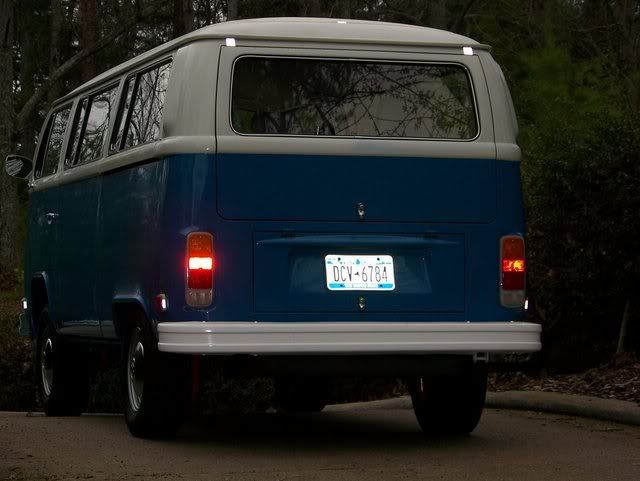Page 1 of 1
Bus IRS trailing arms
Posted: Mon Apr 14, 2008 9:25 pm
by regis101
I read that the TA bushings are vulcanized to the arms.
So what do we do when they need replaced?
Re: Bus IRS trailing arms
Posted: Mon Apr 14, 2008 9:38 pm
by Amskeptic
regis101 wrote:I read that the TA bushings are vulcanized to the arms.
So what do we do when they need replaced?
Find good used ones.
We need to come up with a repair solution as these cars get more worn out. The only reason those bushings go bad is if someone loosened and tightened the bolts with the bus up in the air. They should only be tightened at mid-travel.
Colin
Posted: Mon Apr 14, 2008 9:58 pm
by regis101
When I was doing the return to stock height magic last weekend, I gave a hard look at them. At least I thought so.
The left side seemed a bit, a small bit, unsquare with the bolt. To boot, that side has more neg camber. It was/is a westy, albeit gutted now. IIRC, the westy's had more neg camber than transporters.
I'll have to wait for the alignment specs to see just how much neg camber it has.
Posted: Mon Apr 14, 2008 11:19 pm
by Amskeptic
regis101 wrote:When I was doing the return to stock height magic last weekend, I gave a hard look at them. At least I thought so.
The left side seemed a bit, a small bit, unsquare with the bolt. To boot, that side has more neg camber. It was/is a westy, albeit gutted now. IIRC, the westy's had more neg camber than transporters.
I'll have to wait for the alignment specs to see just how much neg camber it has.
Don't even worry about it. You have plenty of camber adjustment available at the hub/spring plate/diagonal arm interface. It is scary actually, how quickly you make the rear wheels look idiotic. The secret is to ignore the Bentley pipe wrench-on-the-diagonal arm blahblah.
Your initial responsibility is to make sure the spring plate angles are correct (23* is the usual). With the car jacked up at the nose cone mount only enough to let the spring plate blades to touch the lower stops and barely unload the rear tires, get the four big bolts loose but not sloppy. You can effect gobs of camber change by jacking the shock absorber lower support with a little bottle jack, or the forward edge of the diagonal arm where the bolts pass through. It is the rotation of the diagonal arm in relation to the spring plate that changes the camber. Remember that the car being up a bit will give you a shift to positive camber, so use the side that was more normal at rest as your current reference to equalize the bad side to. Official camber readings can only be taken at correct ride height.
Colin
Posted: Tue Apr 15, 2008 8:42 pm
by regis101
Good advice.
I had used a jack at the lower shock mount to help offset the weight while bolting everything back together. Point is I did notice that a lot of potential play could be had. Glad I put the has/witness marks on everything beforehand.
I can indeed live with a little neg camber. What makes it seem askew is also noticing the fronts pos camber at the same time. It runs/drives/rides quite well. I'll get some numbers on the alignment soon.
Posted: Tue Apr 15, 2008 9:14 pm
by Amskeptic
regis101 wrote:What makes it seem askew is also noticing the fronts pos camber at the same time. It runs/drives/rides quite well. I'll get some numbers on the alignment soon.
Classic German rear wheel drive architecture. . . .

